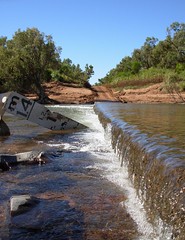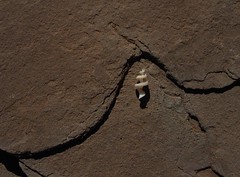Birthday
Today, I tried to avoid work as much as possible. I had to accumulate some gear for the tracking experiment, then went to a movie, Cars. A funny thing happened at the ticket counter. Let me back up a bit. I've talked here about the Deckchair cinema here in Darwin. They are associated with a group here called the Darwin Film Society, who chooses the films, puts together a series of films in the wet, etc. If you're a member, you get discounts on most movies in Darwin, and free admission to some special screenings of films, as well as 4 tickets to get into movies at the Deckchair. So I joined this year, and flashed my card at the counter today. Apparently the girl working there was relatively new and hadn't seen one before. So she gave me a ticket for movie critics, which are free. Happy birthday to me, I guess. Because of that, I feel compelled to write some sort of review of the movie, so here goes. It's about cars. They're funny. Some good voices, a lot of good jokes (both visual, spoken, and in the casting), overall a good time. Certainly worth seeing. And there's a bit at the end of the credits that's worth waiting around for. Look for the Cadillac Ranch imagery.
One advantage to working with nocturnal animals has been that I'm still awake when the World Cup games are on. So, I've gotten completely hooked on them. I'm still saying it will be Argentina over Brazil in the final, and I've got Australia over Ecuador in the runner up match. I think Australia has a good chance to get that far - they're route looks beatable - but I'm a bit worried about Ecuador - they'll have to beat England and probably the Netherlands to get there, but I'll still be cheering for them.
Right. I'm going to wrap up my birthday celebrations by reading a novel and going to bed early.






